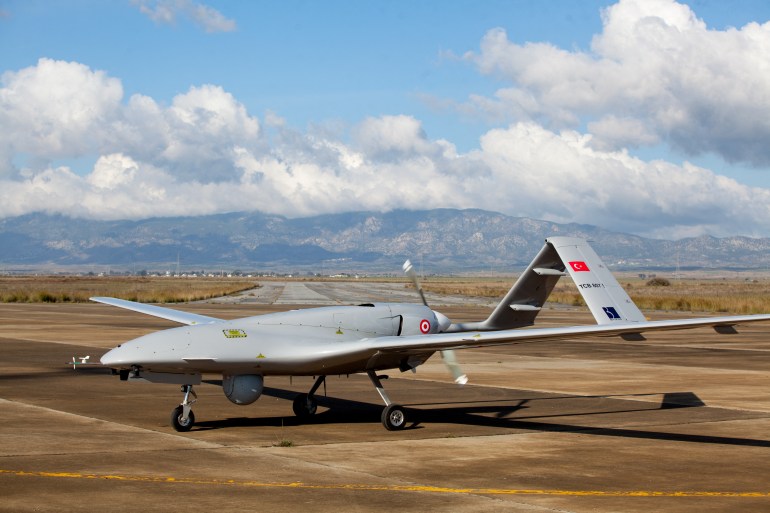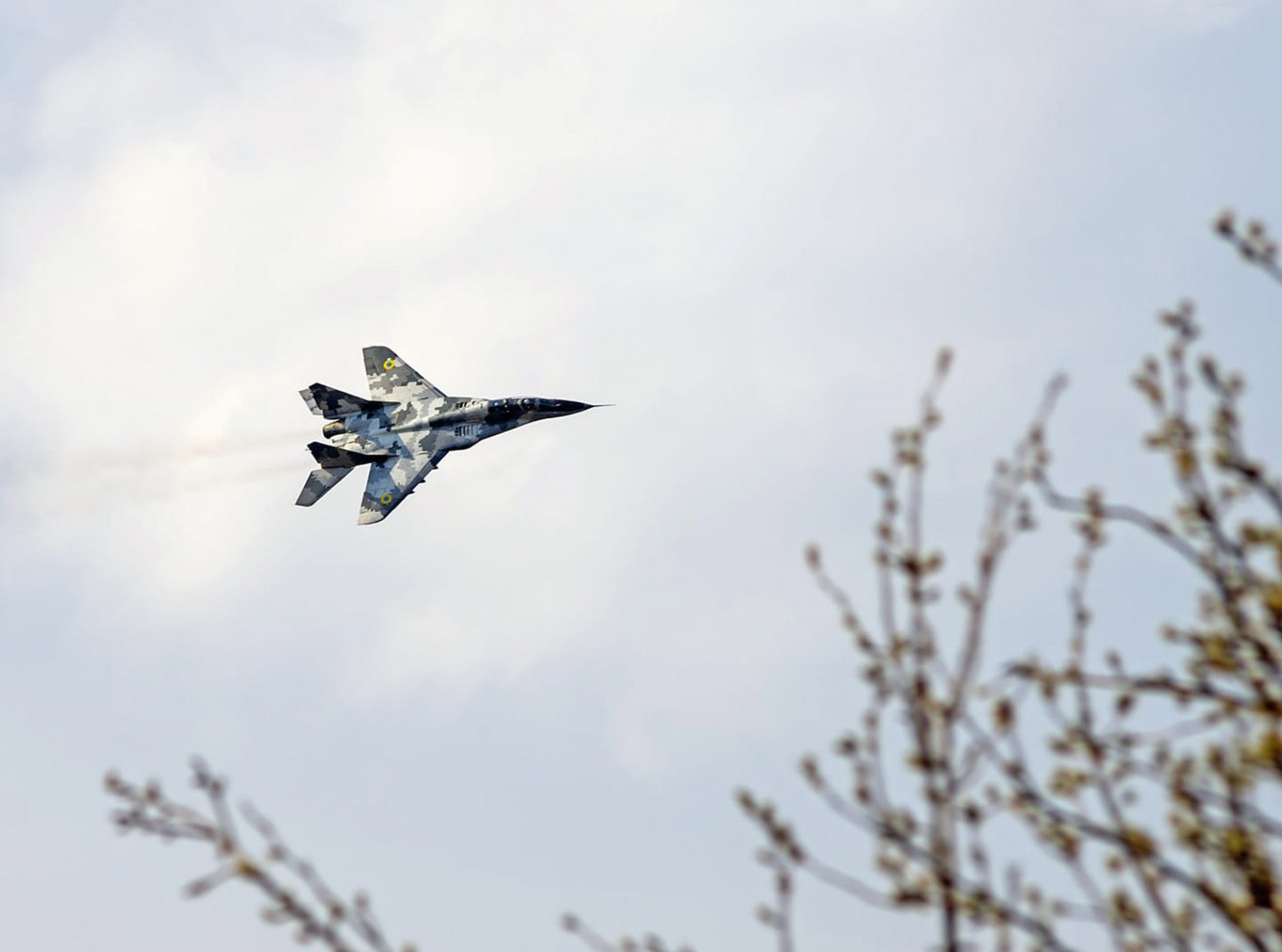Iranian-made Shahed drones may have surpassed the Turkish-made Bayraktar unmanned combat aerial vehicles (UCAVs) in terms of effectiveness and popularity due to the ongoing conflict in Ukraine.
In the initial months of the conflict, Bayraktar TB2 drones were instrumental for the Ukrainian military in destroying the Russian armored columns and troops marching toward the capital Kyiv.
The social media was abuzz with videos of Russian tanks, air defense systems, and supply trucks being knocked out by TB-2 or TB2-assisted artillery strikes.
‘Bayraktar’ became the folklore of Ukraine’s resistance against the Russian invasion. The Ukrainians even composed a folk song about the TB2 drones, probably one of the first songs ever written about a combat drone which was uploaded to YouTube on March 1, 2022.
By this time, the Bayraktar TB2s had become much more than a piece of military equipment, as these drones were now an inspiration for Ukrainians to stand firm against Russian aggression.
For instance, the Ukrainian police forces named a German Shepherd puppy ‘Special Bayraktar’ for his ability to bark and warn others of incoming explosions, days after the Kyiv Zoo named a baby lemur ‘Bayraktar.’

“I can’t remember much fanfare around specific weaponry,” Joe Dyke, of Airwars, an organization devoted to tracking civilian casualties in armed conflicts, told The Independent. “No one sang songs about the Predator or Reaper drones. It’s a moment where everyone is talking about Bayraktar,” he said.
However, as the war shifted to the eastern Ukrainian region of Donbas, Ukrainian forces appeared to have become reluctant to employ TB2 drones, as several of these drones started getting shot down by Russian surface-to-air missile (SAM) systems.
Russian Air Defense Render Bayraktars Ineffective
In an interview in June 2022, two Ukrainian fighter pilots said that Bayraktar TB2 drones had become “almost useless” in the face of threats posed by Russian air defenses in the eastern Donbas region.
There were also some Russian media reports corroborating this. For instance, in July 2022, Russian journalist Alexander Stepanov reported that Russian Tor-M2, S-300, and Buk-series air defense systems deployed in the Luhansk People’s Republic (LPR), have been very effective in intercepting Ukrainian combat drones, including the famous Bayraktar drones.
A Russian Tor-M2 Battery commander named Vladislav, stationed in the LPR, told Stepanov that it is not difficult for the air defense crew to detect a Bayraktar drone because of its large size.
So the main task for the team, according to Vladislav, is to hit a Bayraktar drone at the maximum possible distance before it can launch a long-range missile.

Vladislav explained that their Tor-M2 battery was intercepting hostile aerial targets and the crews of other weapon systems, such as Buk-M2 and S-300 air defense systems.
“If it [the drone] does not enter our kill zone, then we transmit information about the Bayraktar to neighboring units working on it. Here, the air defense system works in conjunction.
“If we do not shoot down, more powerful complexes are working – Buk, S-300. Interaction has been fully established. There are times when they pass on their targets to us so as not to shoot down the same drone with a large missile,” Vladislav said.
He said that initially, Bayraktar operators launched several drones at once, “believing that air defense systems did not properly cover our [Russian] troops.” However, they are trying to save their UAVs and not use them over long distances.
“They [Ukrainian forces] started to study what air defense systems our troops cover before launching Bayraktar,” the Russian battery commander noted.
The Bayraktar drones proved ineffective in regions infested with a large number of air defense systems that worked in a coordinated manner.
Iranian-Made Shahed Drones Enter The War
On the other hand, the Russian military drew much criticism, as covered by EurAsian Times in detail here, for not having employed the unmanned aerial capability as effectively as Ukraine until it introduced the Iranian-made Shahed loitering munitions.
Like Turkey, even Iran is considered among the emerging drone superpowers. Iran boasts many unmanned aerial vehicles (UAVs) ranging from small, light short-range systems to medium to heavy UAVs for intelligence, surveillance, and reconnaissance (ISR).
However, its Shahed-136 kamikaze drones have built quite a reputation for themselves in the ongoing Russia-Ukraine war.
While these drones are not as technologically sophisticated as US, Israeli, Chinese, or even some Russian-made drones, Moscow effectively employs them to destroy Ukrainian positions.
The Russian military has successfully conducted swarm attacks using these drones against Ukrainian positions as far as Kyiv, deep behind Ukrainian frontlines in the eastern part of the country.
Notably, the Russian military achieved an element of surprise in these swarm attacks, thereby minimizing the chances of repulsion by Ukrainian air defense.

These swarm attacks involve several drones (batches of five and above) launched from the same rack to overwhelm enemy air defenses. Russian forces reportedly used 12 drones for a single swarm attack.
As per some reports, the Russian forces have also been launching the kamikaze drones in pairs, with one flying above the other. They are flown as a backup if the lower one is shot down, or if the lower drone is successful, the second one can be directed toward a different target.
The kamikaze drones provide Russia with an expendable and cost-effective alternative to its precious and expensive warplanes and cruise and ballistic missiles. Even if these drones were shot down, they would still deplete Ukraine’s prized stockpile of surface-to-air missiles (SAMs).
The Russian military began filling the Ukrainian skies with a salvo of missiles and loitering munitions to overwhelm the Ukrainian air defense systems.

This is quite similar to the strategic bombing done by the US during the Vietnam War or by the Allied forces during World War II, using several bombers, as discussed at length by EurAsian Times here.
Now, instead, Russia is using drones to target Ukrainian cities, and it saves risking the lives of pilots and losing expensive aerial bombing assets.
Bayraktar Vs. Shahed
The Shahed-136 kamikaze drone is said to have a range of about 2,500 kilometers and can carry warheads weighing between five to thirty kilograms.
The Bayraktar TB2 has a range of about 300 kilometers and can carry a payload of around 150 kilograms.

However, the range or payload does not distinguish the Shahed-136 from Bayraktar TB2s. It is the very small size of the Shahed-136, its low price tag, and the way it can be employed that sets it apart from the Turkish-made Bayraktar drones.
“The advantage comes from the design of the Shahed-136 suicide UAVs,” Uzi Rubin, Israeli defense engineer, analyst, and currently a Research Fellow with Jerusalem Institute for Strategy and Security, previously told EurAsian Times.
He explained that the Shahed-136 is a very small, simple, low, and slow-flying unmanned air vehicle equipped with a simple piston engine driving a wooden propeller – more like a model aircraft than a weapon of war.
“It is very easy to operate – just upload the target coordinates and launch it with a small booster rocket – and very hard to detect by radars or electro-optic devices because of its tiny size (wingspan of about two meters), its slow speed – usually below the threshold of detection of most radars and its tiny infrared signature,” Rubin said.
This was also admitted by a Ukrainian MiG-29 fighter pilot, who goes by the callsign ‘Juice,’ who said during an interview in December 2022, that it is tough to search and track Iranian-made Shahed kamikaze UAVs and then engage them, especially in a Cold War-era fighter like the MiG-29.

He explained that it is challenging to generate a firing solution on a Shahed, with the picture of the drone on the radar screen appearing similar to a flock of birds or even a truck moving along a road.
Ukrainian media outlets suggest the fighter pilots use tactics developed to engage Russian cruise missiles in mid-air. The enemy cruise missiles, like drones, have a small reflective surface. They usually travel at a very low altitude, making them difficult to detect against the ground using an aircraft’s radar.
So, the Ukrainian fighter pilots rely on the electro-optical targeting system to detect the missile’s thermal trace.
However, Juice explained that a cruise missile, due to its higher speed and resulting Doppler effect, is much easier to detect for MiG’s radar than a slow-flying Shahed, which can easily get lost among rooftops and other ground clutter.
Rubin recently explained to Newsweek that while Shahed drones are difficult to detect, they are usually simple to shoot down if caught in time, which is the challenge.
“When you find them, you shoot them,” said Rubin. However, “if you don’t see them, you can’t shoot them. And mostly you don’t see them,” he added.
Apart from the size, the Shahed-136 is also significantly cheaper than the Bayraktar TB2 drones. The price of a single Bayaraktar TB2 is reportedly around US $5 million, and each drone requires 100 MAM-L smart micro munitions, which together are worth US $15 million. In addition to that, there are also costs of training and command-and-control centers, which depend on the number of drones purchased.
Therefore, Ukrainians must be mindful of the risk of losing the drone when employing a Bayraktar TB2 for any mission.
The average Shahed drone, which costs only about US $20,000 per piece, is supposed to be destroyed in their missions. Therefore, their shoot-downs do not represent a loss for the Russian military, which is launching them for a one-way mission.
Furthermore, kamikaze drones downed after reaching cities also have considerable potential for causing large-scale damage from falling wreckage.
As EurAsian Times discussed earlier, Ukraine is spending significantly more money on countering the threat from Shahed-136 kamikaze drones fired at its cities than Russia spends on acquiring and launching these Iranian-made drones.
Ukraine has been using its surface-to-air missiles and fighter aircraft, including MiG-29 and Su-27, to shoot down Shahed-136 drones.
Ukraine’s surface-to-air missile systems include Soviet-era air defense systems like S-300s, which have already been depleting faster, and the expensive West-supplied systems like IRIS-T and NASAMS.

After almost every large-scale drone attack by Russia, Ukrainian forces have claimed an impressive number of shoot downs, mostly above 60 percent, and in some instances, even above 80 percent.
Even if the claims made by Ukrainian forces are true, the significant cost differential between the kamikaze drones employed by Russia and the surface-to-air missiles used by the Ukrainian troops to shoot them down, coupled with the vast numbers in which Russia deploys these kamikaze drones, raises the question whether Ukraine can call its counter-drone effort a success.
These surface-to-air missile systems are critical for Ukraine to deny its airspace to advanced Russian fighter aircraft. Instead, they are being used in huge numbers to counter cheap Iranian-made kamikaze drones.

For example, an average Shahed drone costs around $20,000, while an IRIS-T missile costs about $430,000, 20 times more than the Iranian-made kamikaze drone.
Ukraine is said to have spent around $28.14 million, from September 13 to October 17, on defense against these kamikaze drones, according to an estimate by military analysts at the NGO Molfar, based on open-source data of kamikaze drone launches by Russia during that period.
Whereas for Russia, the cost of drone attacks on Ukraine for the same period is estimated by military analysts at the NGO Molfar to be only around $11.66-17.9 million.
- Contact the author at tanmaykadam700@gmail.com
- Follow EurAsian Times on Google News




